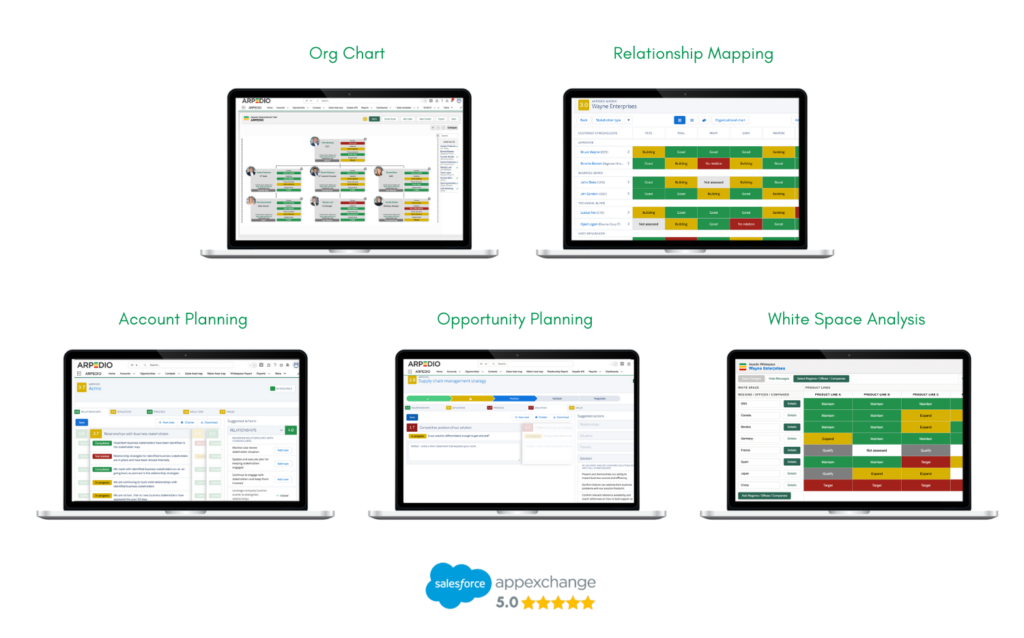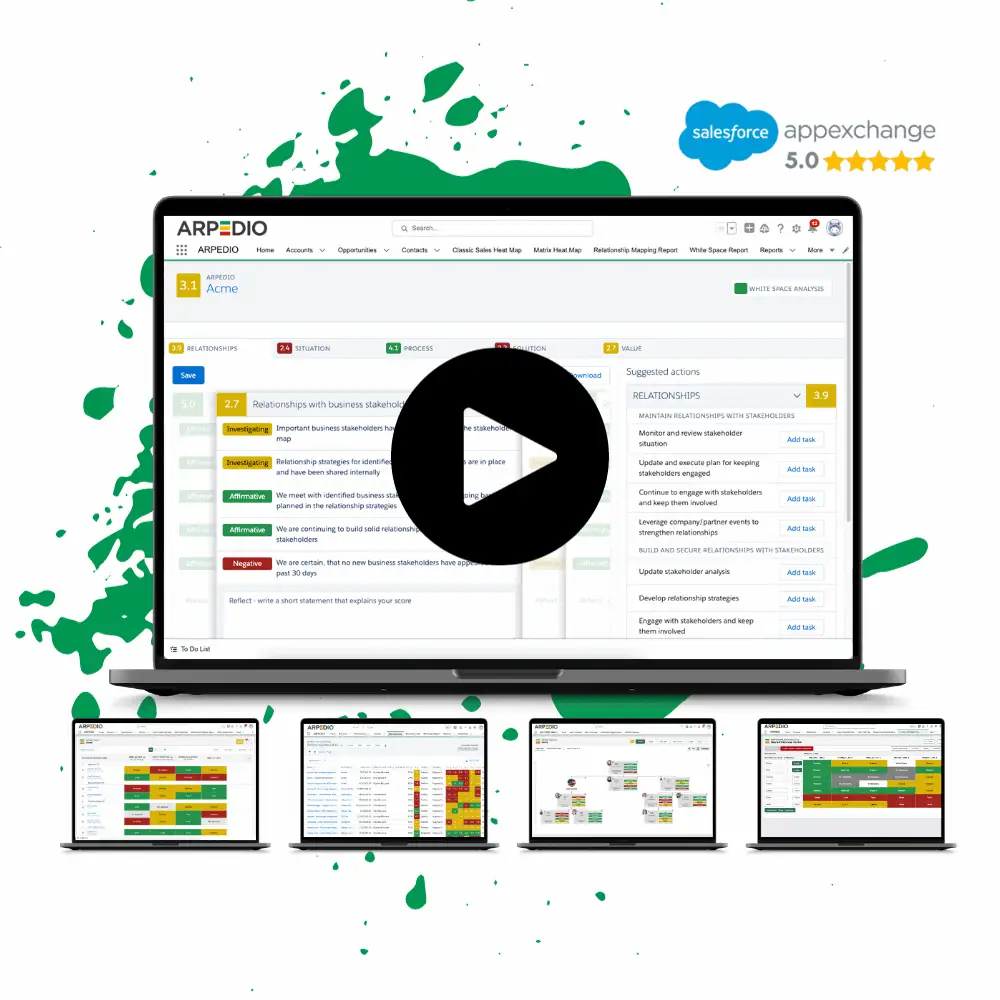In a nutshell, opportunity management is the process of tracking and managing your sales opportunities as they move down the sales funnel. Well-executed opportunity management helps you prioritize your efforts on the opportunities that can bring in the most revenue and have the highest probability of closing. Keep reading as we cover all the essential bits and pieces surrounding opportunity management.
Table of Contents
What is Opportunity Management in Sales?
If you work in Sales (or have ever worked in Sales), surely you’re painfully aware that nothing is definite until you have a signed contract in your hands. Up until then, all (potential) deals are ‘simply’ opportunities. And this is where the need for opportunity management comes in.
Opportunity Management–sometimes referred to as Pipeline Management–is the very valuable practice of organizing, managing and tracking potential deals–also called opportunities–in your sales pipeline. Opportunity management supports you in prioritizing the opportunities that have the biggest potential in terms of value and closing probability. In other words, opportunity management is a means to help you focus your efforts to reach your sales goals.
Now, the endgame of getting a new opportunity into your sales pipeline is of course that it will eventually turn into a closed-won opportunity. However, imagine having to deal with multiple opportunities at once and not having a system in place to support your sales efforts. If this is the case, converting these opportunities into paying customers can prove very difficult.
Enter opportunity management. If you want to set yourself up for sales success, practicing proper opportunity management is crucial. Implementing and practicing proper sales opportunity management is the best way to capitalize on an opportunity: It gives you control of the sales flow and thus a better shot at closing deals.
Why is Opportunity Management Important?
Before we dive further into the topic, let’s first take a brief moment to reflect on WHY sales opportunity management is so important. So, think about your current approach to opportunity management for a second…
Do you know if the opportunities currently in your pipeline are likely to close? If yes, do you know how likely? Are you fully aware of which opportunities to focus on and when? Does it take you hours, or even days, to follow up on certain opportunities? Are you unsure about your Win/Loss ratio? Do you have a hard time measuring the value of your sales opportunities? Are you unaware of next steps when pursuing an opportunity?
Unless you got all of this covered down to the last inch, chances are you’ll be missing out on a lot of signatures. And if this isn’t every salesperson’s worst nightmare, then I don’t know what is.
Luckily, this article will provide you with everything you need to know about successful opportunity management, so potential revenue will never fall between the cracks again. Stay tuned as we cover how carefully managing your opportunities can help you accelerate your business.
The Lead to Opportunity Process
It all starts with a lead: Someone who’s shown a genuine interest in your offering(s). This includes the need, the budget and the decision power to get the ball rolling – all within a reasonable timeline. When you can tick off all of these criteria, your lead is no longer a lead: It’s an opportunity. What happens next will depend on the efficiency of your sales process: We like to call it the moment of truth for how well you tackle your sales efforts. More on that later. Let’s first look at the lead to opportunity process.
4 Essential Qualities of an Opportunity
- They have a need for the product or service you offer
- They have the budget to pay for the product or service
- They are planning to buy your product or service within a reasonable time
- They have the decision-making power to go through with the deal
What is a Sales Lead?
A lead is a set of contact information for a person or business that can potentially facilitate a future sale–or in short: a sales prospect, or an “unqualified” sales opportunity.
Typically, a sales lead is represented by a single person at a business looking to purchase a product or service that you offer. This lead won’t necessarily be the person who eventually ends up signing the deal, but what all leads have in common is that they are stakeholders who in one way or the other have an interest in a potential sale.
What is a Sales Opportunity?
While closely related, opportunities and leads are two different things. Whereas leads are ‘merely’ contacts who have shown an interest in your business, opportunities are the specific deals–with an estimated amount–being actively pursued by your sales team.
So what exactly is a sales opportunity? In short, a sales opportunity is a qualified sales lead that is considered to have a high chance of turning into a closed-won deal.
When new leads come in, sales’ most important job is to move these potential customers through the sales funnel by proving the need your product or service can fulfill.
Examples of Sales Opportunities
We’ve already established that an opportunity is a potential sale, but let’s have a quick look at some concrete sales opportunity examples as they can take many shapes and forms. Below we’ve listed some examples of the most common types of opportunities:
- New business opportunities: new clients and accounts who are doing business with you for the first time.
- Cross-sell opportunities: selling a different product or service to an existing customer.
- Upsell opportunities: Selling more of, or an upgrade to an existing product or service that a customer already uses.
- Migration opportunities: these are most often seen in tech companies when you move your customer from a competitor’s platform to your platform.
- Renewal opportunities: convincing your customer to renew their subscription to your product or service.
What are the Benefits of Opportunity Management?
Still not completely sure why sales opportunity management matters a great deal to your business? If you want to be much more efficient with your sales efforts–and I’m guessing that you do–I assure you that opportunity management is the key to reaching that goal.
Practicing well-thought-out opportunity management can be a valuable and many-sided advantage to your company. For starters, it’s your tool for carefully tracking the deals that haven’t closed yet. Another three benefits of opportunity management you don’t want to miss out on are:
1. A much better understanding of your prospective customer
And with this understanding comes the ability to prioritize your communication and engagement in accordance with each prospect’s business potential.
2. The ability to approach potential customers in the best possible way
This is based upon their demonstrated interest and the relationship state between them and you/your business.
3. The possibility to identify shortcomings in your sales process
This is a game changer as it allows you to keep improving how you engage with your prospects.
Sound opportunity management can bring so many good things to your business. And these three benefits alone should be plenty of reason to start managing your opportunities in a carefully planned manner. On that note, let’s jump right into how to actually get started – and in the right way.
The Complete Account-Based Selling Platform
The Complete Account-Based Selling Platform
Want to make the most of your Salesforce setup? Empower your sales professionals with the capabilities of ARPEDIO’s Account-Based Selling platform.
How to get Started With Opportunity Management?
We’ve already gone over this a couple of times, but to make sure we have everyone on board: The opportunity management process tracks, manages and prioritizes the opportunities in your sales pipeline. Good. Now that that’s clear to everyone, let’s dive into the actual steps you need to take, or consider, to get started with sales opportunity management.
Step 1. Build Your Pipeline – Preferably in a CRM
The foundation for proper sales opportunity management is a clearly defined and operational sales pipeline. However, figuring out the final ‘design’ of your sales pipeline can be tricky – and unfortunately, there’s no one-size-fits-all solution that can simply be adopted by every business.
The efficacy of your sales pipeline is often measured by how well you’re able to present it. This includes keeping it nicely separated and easy to understand. Now, if only there was a solution to ensure this… Luckily, there is – and the solution goes under the name Customer Relationship Management (CRM) systems.
Some CRM systems offer the possibility for their customers to build neatly constructed pipelines that are easy to maintain directly inside of them. Others don’t. In that case, it’s sometimes possible to add an external Opportunity Management software to the platform.
Either way, setting up your pipeline in your CRM allows you to define your own stages from where you can determine the maturity and the closing probability of the opportunities in your pipeline. With the ability to watch over your opportunities as they move through the sales funnel, you’ll have the best foundation for converting them into paying customers in the smoothest way.
Below is an example of a pipeline overview in Salesforce combined with ARPEDIO’s Opportunity Management software.
Depending on the specific CRM, there’s a good chance that the stages will vary. However, pipelines commonly include stages such as Discovery, Targeting, Selling, Closing, and Closed(-Won/Lost).
Building a pipeline essentially gives you the (visual) roadmap to track and manage your deals in the best possible way. In other words, without a well-structured pipeline, your opportunity management efforts won’t be nearly as effective as they can (and should!) be.
Step 2. Research Your Opportunities Thoroughly
Each and every (potential) customer out there is different from one another. Period. They all have different approaches, priorities and business potential. Thus, to be effective with your opportunity planning, it’s paramount to have a clear understanding of the rules each prospective client plays by.
The stakeholders you’re dealing with are all going to have different budgets and different levels of authority in terms of decision-making. Some will be constantly available and others will be hard to reach. These factors will give you an idea of the state of each potential deal, and they can even help you add more potential value to the deals you’re already tracking in your pipeline.
Bottom line, the message that we want to get across is this: Researching your opportunities thoroughly is paramount to succeed with opportunity management for two main reasons:
- To help you prioritize the opportunities that are most profitable and most realistic to close
- To help you better understand your stakeholders and thus improve communication between you
Step 3. Uphold and Track Communication With Your Opportunities
You want to stay on top of your opportunities. That’s a given. And to do so requires staying in (close) contact with your stakeholders on a regular basis. This includes following up on all queries in due time and making sure you reach out at each stage of the sales process for the latest updates. This way you’ll get to have a good feeling about their interest in doing business with you.
When you define your pipeline, you’ll discover that opportunities don’t randomly move through your sales funnel: The status of your opportunity is very much dependent on concrete actions.
And only if you uphold communication with your contacts, you’ll know where they are on the buying decision journey and when they’re ready to move to the next stage. Needless to say, it’s essential that you track this information on an ongoing basis. And for this your CRM can prove very useful in the case it allows you to log this valuable communication with your opportunities – either manually or automatically.
Step 4. Create a Panoramic View and Identify Blind Spots in Your Sales Pipeline
There are many benefits of building your sales pipeline directly in a CRM. And one of them is the ability to pinpoint where exactly you’re losing opportunities. With full visibility into your sales process, you’ll be able to address potential roadblocks and continuously improve the process in which your opportunities move closer to the finish line.
Opportunity management is much more than just keeping track of potential deals. It’s also a great opportunity to take a closer look at your sales efforts from an organizational perspective: Maybe you’re seeing an excessive amount of lost business happening in the stage between sales reps giving demos and getting stakeholder buy-in. If this is the case, you instantly know that it’s time to up your demo game: Your sales reps might need more training, maybe your demos need to be structured differently, or maybe your presentation material is simply ready for the full makeover.
For all of the above reasons, well-executed sales opportunity management is your key to build and maintain a successful sales process. And it’s simple, really: In order to know how to approach your opportunities in the best possible way, you first need to be able to track and fully understand them.
Opportunity Management in Salesforce
Maybe you’re already familiar with Salesforce, but in case you’re not: Salesforce is a cloud-based software company providing customer relationship management software and applications focused on sales, customer service, marketing automation, analytics, and application development. Based on market size, Salesforce takes the lead as the number one CRM software vendor – and this is only one of the reasons why Salesforce is a good place to start your sales opportunity management.
But what exactly is opportunity management in Salesforce? Opportunity Management in Salesforce depicts a potential sales deal between you and your prospect and supports you in managing and tracking your opportunities – directly in Salesforce. This way you have all the relevant information you need to turn your opportunities into closed-won deals in one place.
Salesforce Opportunity Management Software
Now, wouldn’t it be cool, if you could take your opportunity management even further? There’s no doubt that Salesforce is an excellent platform. Period. That’s why all of ARPEDIO’s solutions are 100% native to Salesforce. We are big fans of Salesforce and its capabilities, but we also believe that by adding a ‘second layer’ to your pipeline, you can make your forecasting even more accurate.
ARPEDIO’s Opportunity Management Software for Salesforce is your tactical assistance for pipeline and forecast management. It qualifies your pipeline by forecasting based on facts rather than gut feeling and provides you with concrete guidance that–easily but intelligently–assesses your opportunities natively in Salesforce.
By adding ARPEDIO’s Opportunity Management Software on top of your existing Salesforce setup you can streamline your complex opportunity planning processes. This includes creating a common language for your sales best practice, ensuring precise forecasting, and thus increasing the results of your overall sales planning. You’ll be able to easily identify red flags and low hanging fruits, making it a whole lot easier to zoom in on the essentials and prepare for pipeline meetings, team reporting, one-to-one coaching, etc., not to mention easing leadership challenges.
All in all, ARPEDIO’s Opportunity Management Software offers you a qualified opportunity pipeline and ensures a more effective way of handling all of your critical opportunities – regardless of the level of opportunity complexity!
If you’re going to take one thing away from this article, this should be it: Highly-skilled sales opportunity management is a prerequisite to sustain the best possible sales process, focus on the opportunities with the most potential, and thus close more deals, faster. And with a CRM by your side, the return on your opportunity management efforts will be so much more rewarding.



















